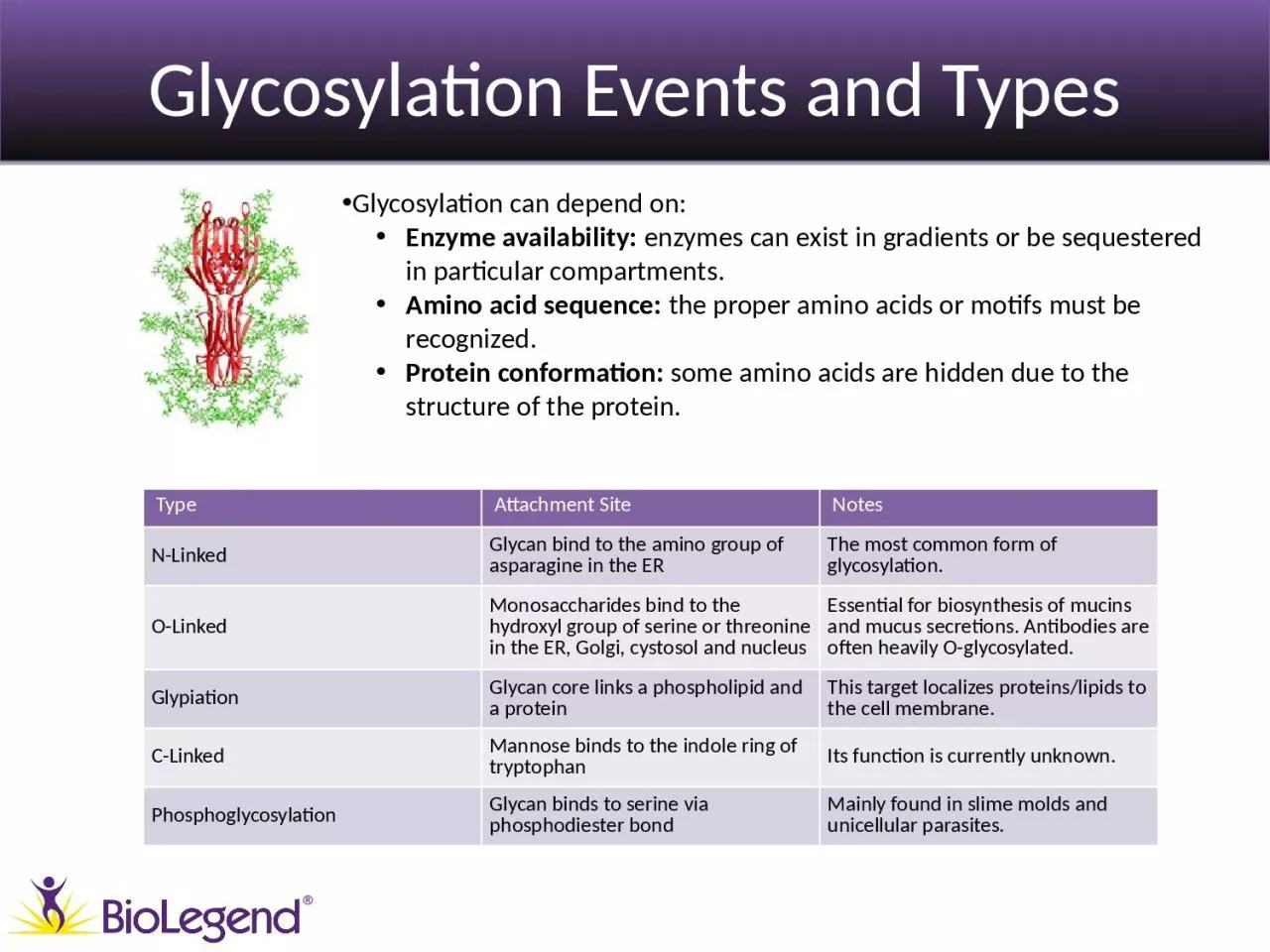

Glycosylation can depend on Enzyme availability enzymes can exist in gradients or be sequestered in particular compartments Amino acid sequence the proper amino acids or motifs must be recognized ID: 1006717
Download Presentation The PPT/PDF document "Glycosylation Events and Types" is the property of its rightful owner. Permission is granted to download and print the materials on this web site for personal, non-commercial use only, and to display it on your personal computer provided you do not modify the materials and that you retain all copyright notices contained in the materials. By downloading content from our website, you accept the terms of this agreement.
1. Glycosylation Events and Types®Glycosylation can depend on:Enzyme availability: enzymes can exist in gradients or be sequestered in particular compartments. Amino acid sequence: the proper amino acids or motifs must be recognized.Protein conformation: some amino acids are hidden due to the structure of the protein.TypeAttachment SiteNotesN-LinkedGlycan bind to the amino group of asparagine in the ERThe most common form of glycosylation.O-LinkedMonosaccharides bind to the hydroxyl group of serine or threonine in the ER, Golgi, cystosol and nucleusEssential for biosynthesis of mucins and mucus secretions. Antibodies are often heavily O-glycosylated.GlypiationGlycan core links a phospholipid and a proteinThis target localizes proteins/lipids to the cell membrane.C-LinkedMannose binds to the indole ring of tryptophanIts function is currently unknown.PhosphoglycosylationGlycan binds to serine via phosphodiester bondMainly found in slime molds and unicellular parasites.